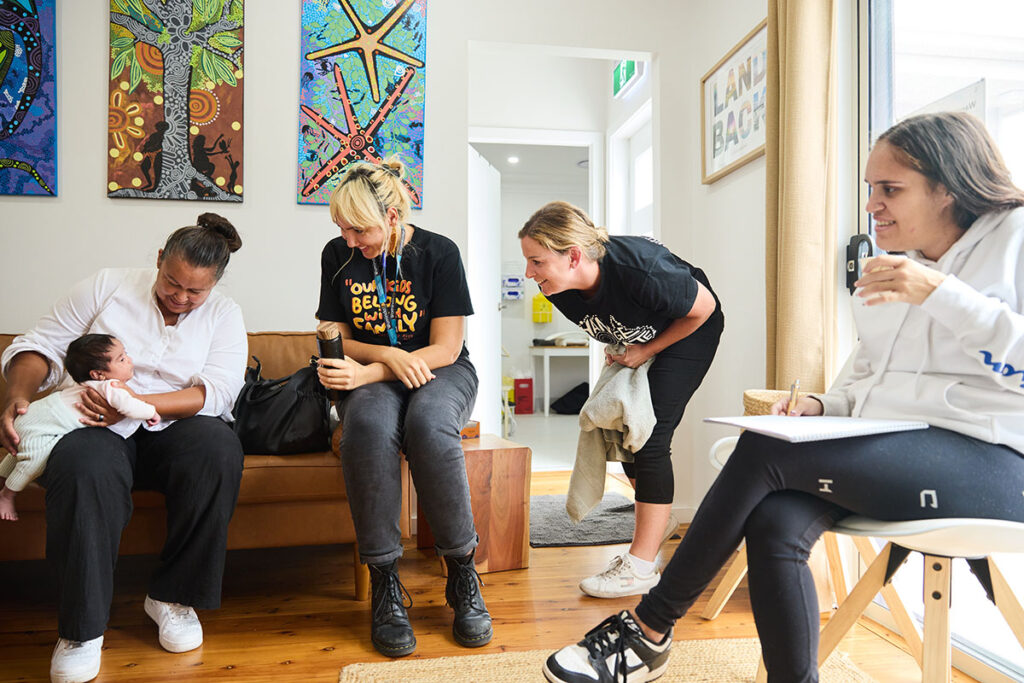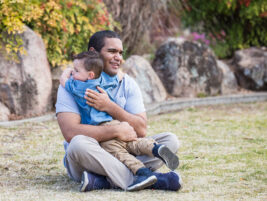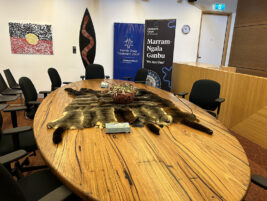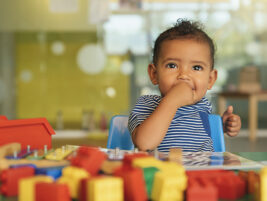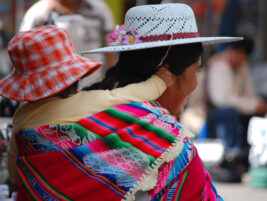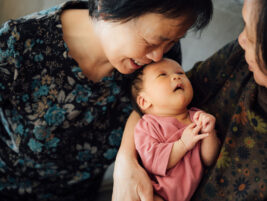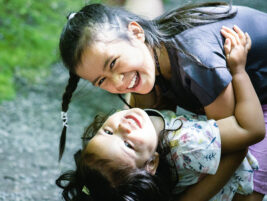Australia is considered one of the safest places in the world for a woman to give birth with universal access to publicly-funded maternity care, robust healthcare infrastructure and a highly skilled and regulated health workforce (COAG Health Council, 2019). Yet, despite this, First Nations women and babies currently experience significant disparities in health outcomes when compared with their non-First Nations (Australian Government Department of Health and Aged Care, 2021). These disparities include higher rates of maternal mortality (14.4 deaths per 100,000 vs national average of 4.8), higher perinatal mortality rates for babies born to First Nations mothers (17 deaths per 1,000 births, vs 9.6 per 1000 for non-First Nations babies) (AIHW), higher rates of preterm birth (14% vs 8% born before 37 weeks’ gestation) and a greater number of First Nations babies born at a low birthweight (12% vs 6% <2500g) (Australian Institute of Health and Welfare, 2025a). Although the deficit discourse surrounding First Nations peoples attempts to locate these disparities as arising from an intrinsic lack or risk situated with First Nations Australians themselves, a more truthful appraisal points to both a lack of culturally appropriate services and the risk of women experiencing racism within mainstream maternity services (Adams et al., 2018; Macedo et al., 2020; Sherwood, 2013; Simmonds et al., 2012). Despite countless Australian government initiatives over the past two decades aiming to ‘Close the Gap’ in health inequities (Commonwealth of Australia, 2023), White healthcare systems remain unsafe for Blak1 bodies.
Prior to colonisation, First Nations women were generally healthy and well-nourished (Webb, 2009). They experienced birth in the context of deep connection to Country, culture and community (Adams et al., 2018; Roe, Yvette et al., 2024).
Indigenous women have been birthing since time immemorial, when the lands were pure, and the dreaming stories were a reality. Birthing is the first ceremonial journey we go through to leave the spirit world to come into the physical world. Our connection to our ancestors and our culture provides our people with a sense of belonging and grounds our ways of knowing, being and doing (Briggs, 2022).
Post colonisation, however, the Western healthcare system was used as a tool of control and assimilation where First Nations people experienced medical neglect, denial of treatment and dehumanisation (Dow & Gardiner-Garden, 1998). As such, a deep mistrust of mainstream healthcare services persists amongst First Nations communities, acting as a barrier to health equity (Freeman et al., 2022; Gatwiri et al., 2021). For this to change, it is vital that we recognise these disparities as not merely health ‘gaps’, but rather a reflection of the systemic inequality embedded in healthcare structures (Gatwiri et al., 2021).
Colonisation, it seems, is bad for your health (Sherwood, 2013). The colonisation of Australia by British settlers from 1788 until the present day involved dispossessing First Nations people of land, language and culture, enacted in part by forcibly removing First Nations children from their families and placing them in government or church-run institutions (Human Rights and Equal Opportunity Commission, 1997). The main period of forcible removals, known as the Stolen Generations, occurred from 1910 until the 1970s as part of the Australian government’s attempt to ‘assimilate’ First Nations people into White Australian society, with the aim of erasing culture and identity (Human Rights and Equal Opportunity Commission, 1997; Read, 2006). Australia’s violent colonial past initiated a domino effect of intergenerational trauma that continues to have far-reaching detrimental impacts on the social and health determinants experienced by First Nations people today (Human Rights and Equal Opportunity Commission, 1997; Kairuz et al., 2021; Sherwood, 2013). In many ways, the colonial project persists to this day with First Nations people living with daily experiences of racism in interpersonal, systemic and internalised forms (Jones, 2001; Kairuz et al., 2021; Watego, 2021).
Despite sustained attempts to decimate First Nations peoples, First Nations people continue to persist and resist. From the early 1970’s in Australia, a movement established to develop health care services that are designed, delivered, and governed by Aboriginal people for Aboriginal people (National Aboriginal Community Controlled Health Organisation (NACCHO), 2020). Aboriginal Community Controlled Healthcare Organisations (ACCHOs), work to empower communities to shape services that meet their unique needs, grounded in the principles of self-determination and the provision of culturally safe, holistic care (National Aboriginal Community Controlled Health Organisation (NACCHO), 2020). In the maternity care sector, First Nations communities are fighting for birthing sovereignty, calling for the funding of First Nations-led solutions to perinatal health inequities (Hickey et al., 2021; Sherwood, 2013). This movement is known as ‘Birthing on Country’, which refers to maternity services designed and delivered for and by First Nations women that encompass connection to Country, integration of cultural knowledge, provision of care by Aboriginal midwives and Aboriginal Health Practitioners with a focus on community and kinship (Australian College of Midwives et al., 2016; Roe, Y. et al., 2020).
At the forefront of the Birthing on Country movement in Australia is an ACCHO called Waminda South Coast Women’s Health and Wellbeing Aboriginal Corporation (hereafter Waminda). For the past 40 years, Waminda have been providing culturally safe and holistic health and wellbeing services to women and their Aboriginal families on the unceded lands of the South Coast of New South Wales (NSW). Waminda was established in 1984 as an Aboriginal Women’s Health Centre known as ‘Jilimi’, in response to the local Koori2 community’s concern about the lack of culturally safe health services available for women and their families (Waminda, 2025). Waminda operates from a foundation of culture and employs a firmly strengths-based approach, pushing back on the deficit narrative that permeates most mainstream healthcare services. The organisation is community driven, led, connected and informed, overseen by a Board comprising of seven local Koori women elected by the local community at their Annual General Meeting each year. Waminda’s community-centred approach includes taking guidance from the Women’s Elders Group and Cultural Committee who ensure Aboriginal ways of knowing, being and doing are incorporated into all aspects of the service.
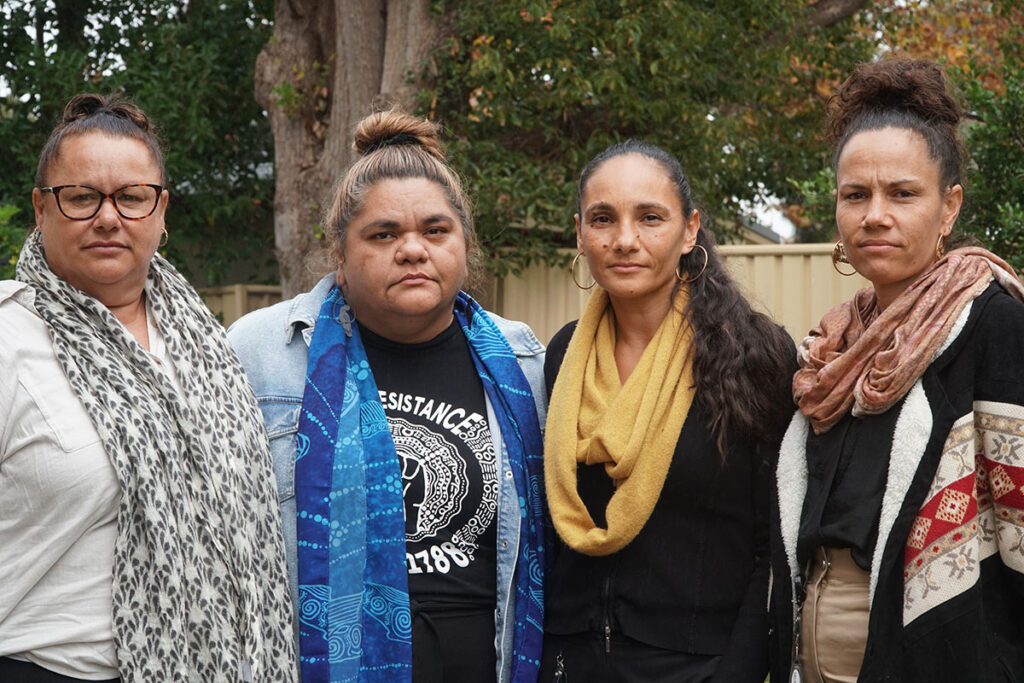
Waminda has developed a distinctive Model of Care that is deeply rooted in Aboriginal culture, community leadership, and self-determination (SNAICC, 2023). The service supports reclamation of intergenerational wellbeing for women and their Koori families through the provision of high-quality, holistic care that addresses the social determinants of health. This is achieved by offering comprehensive ‘wrap-around’ services, where internal referral pathways provide women with seamless access to non-judgemental care from numerous Waminda programs including; primary healthcare with doctors, nurses and Aboriginal Health Practitioners; maternity and sexual health services; counselling and psychology services; family preservation and restoration casework; domestic violence prevention and support; chronic disease management and prevention through nutrition and exercise; and youth programs, all provided within a holistic, culturally safe, and trauma-informed framework.
Within the Australian maternity care sector, the upscaling of Birthing on Country is fundamental to reclaiming intergenerational wellbeing for First Nations families. It is well recognised that a mother’s mental health has implications for her infant’s development, with poor maternal mental health having potentially long-term adverse effects on children’s mental and physical health, and their cognitive and socio-emotional skills (Feldman, 2015; von Hinke et al., 2022). At present, 97% of all births in Australia occur in hospital labour-ward settings (Australian Institute of Health and Welfare, 2025a), yet these institutions continue to contribute to unacceptable, harmful healthcare experiences for First Nations women (Hickey et al., 2021; Macedo et al., 2020). This has flow on effects for families, as women who experience traumatic births commonly report difficulty bonding with their infant, experience less secure attachment and report parenting as more stressful (Fameli et al., 2023; Hairston et al., 2018; McDonald et al., 2011). The 2024 NSW Parliamentary Inquiry into Birth Trauma revealed the extent to which Australian women were being traumatised by their birth experiences with over 4000 written testimonials detailing a lack of informed consent, inadequate pain relief, and experiences of disrespect and mistreatment (NSW Parliament, 2024). Research demonstrates that 1 in 3 women report their births as traumatic and between 3-15% are estimated to develop Post Traumatic Stress Disorder after childbirth (Grekin R. & O’Hara M.W., 2014). While specific national statistics on birth trauma rates among First Nations women are limited, evidence of racism experienced within mainstream maternity care systems combined with higher rates of complex life stressors make it likely that birth trauma rates are much higher among Indigenous women (Kairuz et al., 2021; Macedo et al., 2020). Waminda are determined to disrupt this cycle of trauma.
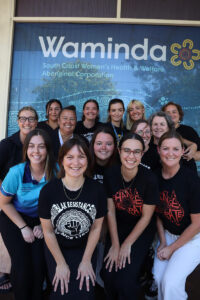
At Waminda, Birthing on Country is a metaphor for the best start to life for Koori babies, ensuring a safe passage for Mingas (Mothers) and Gudjagas (Child) through supporting a healthy transition to motherhood for women by strengthening family capacity and cultural connection. A key strength of Waminda’s Birthing on Country service is that it is anchored within their broader community-controlled, wrap-around services. Maternity care is provided at Minga Gudjaga Gunyah3 (Mother and Child Home), a community clinic based in the Nowra CBD. Care can also be provided at the woman’s home or any location in community that she chooses. Minga Gudjaga is Aboriginal Health Practitioner (AHP)led, meaning that women see an AHP as their first point of contact in pregnancy, and continue to have regular AHP visits alternating with antenatal appointments with their primary midwife throughout pregnancy. AHPs are registered healthcare practitioners who specialise in providing culturally and clinically safe care, supporting the social and emotional wellbeing of women and their families. Waminda AHPs are known and trusted members of the local community, which helps women feel safe in accessing the service. For women experiencing complex life stressors, Waminda’s provision of culturally-informed, individually tailored, strength-based care reduces Koori families’ interaction with government child protection agencies, decreasing the risk of child-removal.
First Nations children are significantly overrepresented in out-of-home care (OOHC) systems, making up 43% of all children in OOHC and only 4% of the national population (Australian Institute of Health and Welfare, 2025b). In mainstream maternity care services, First Nations families with complex trauma are more likely to be reported to child protection services than they are to receive family support in pregnancy (Chamberlain et al., 2022), with the risk of child removal a major barrier to parents asking for and receiving the help they need (Newton, 2020). To protect women from the risk of child-removal, Waminda’s Birthing on Country team work closely with Nabu, an internal family preservation and restoration program, which aims to keep Koori families together. Nabu evolved in direct response to community concerns that too many Koori children were being removed from their families. To combat the epidemic of child removal, Nabu focuses on local solutions and contextualised activities to engage and strengthen participating families and achieve the best outcomes for all involved (SNAICC, 2023). Nabu’s intensive support includes the provision of counselling and intensive parenting support, and advocacy for families who are navigating the education, housing and legal systems (SNAICC, 2023).
For decades, First Nations communities have sought to reclaim birth, endeavouring to ensure the best start to life for future generations. At Waminda, this is achieved through the application of Aboriginal governance and safety strategies to support maternal, infant and family health and wellbeing within a holistic Model of Care. Waminda’s Birthing on Country program answers the call from local Koori women for a safe space to birth their babies, that integrates culture and decolonises healthcare delivery. Preventing birth trauma and supporting women to heal from the trauma of previous births or adverse life experiences gives women and their Koori families the best start to life, supporting them to reclaim their right to intergenerational health and wellbeing.
- The term ‘Blak’ is a deliberate re-spelling of ‘Black’, removing colonial associations tied to this word and reclaiming an Indigenous-defined identity grounded in pride and solidarity.
- Koori is a term used by Aboriginal people from southeastern Australia, particularly in parts of New South Wales and Victoria, to refer to themselves. It is a self-chosen, culturally specific identifier, as opposed to a general term for all Aboriginal and Torres Strait Islander peoples (Australian Indigenous Health et al., 2022).
- Gunyah is a Dhurga word signifying a home. It represents a place for our community to feel welcome, safe and where they belong (Waminda, 2024)
References
Adams, K., Faulkhead, S., Standfield, R., & Atkinson, P. (2018). Challenging the colonisation of birth: Koori women’s birthing knowledge and practice. Women and Birth, 31(2), 81–88. 10.1016/j.wombi.2017.07.014
Birthing on Country position statement. (2016). https://indigenousmidwives.org.au/birthing-on-country-position-statement/
Australian Government Department of Health and Aged Care. (2021, June 30). Status and determinants of Aboriginal and Torres Strait Islander health. https://www.health.gov.au/topics/aboriginal-and-torres-strait-islander-health/status-and-determinants
Australian Indigenous Health, InfoNet, & . (2022). The Australian Indigenous HealthInfoNet guidelines for Aboriginal and Torres Strait Islander terminology. https://healthinfonet.ecu.edu.au/healthinfonet/getContent.php?linkid=675466&title=The+Australian+Indigenous+HealthInfoNet+guidelines+for+Aboriginal+and+Torres+Strait+Islander+terminology&contentid=44676_1
Australian Institute of Health and Welfare. (2025a). Australia’s mothers and babies. https://www.aihw.gov.au/reports/mothers-babies/australias-mothers-babies/contents/about
Australian Institute of Health and Welfare. (2025b). Child protection Australia 2022–23. https://www.aihw.gov.au/reports/child-protection/child-protection-australia-2022-23
Briggs, M. (2022, Feb 21). Birthing on Country is a Sovereign Right for Indigenous Parents.
Chamberlain, C., Gray, P., Bennet, D., Elliott, A., Jackomos, M., Krakouer, J., Marriott, R., O’Dea, B., Andrews, J., Andrews, S., Atkinson, C., Atkinson, J., Bhathal, A., Bundle, G., Davies, S., Herrman, H., Hunter, S. A., Jones‐Terare, G., Leane, C., . . . Langton, M. (2022). Supporting Aboriginal and Torres Strait Islander Families to Stay Together from the Start (SAFeST Start): Urgent call to action to address crisis in infant removals. Australian Journal of Social Issues., 57(2), 252–273. https://doi.org/10.1002/ajs4.200
COAG Health Council. (2019). Woman-centred care: Strategic directions for Australian maternity services. https://www.health.gov.au/sites/default/files/documents/2019/11/woman-centred-care-strategic-directions-for-australian-maternity-services.pdf
Commonwealth of Australia. (2023). Briefing book: Key issues for the 47th Parliament. Parliament of Australia. https://www.aph.gov.au/-/media/05_About_Parliament/54_Parliamentary_Depts/544_Parliamentary_Library/Research_Papers/2023-24/Briefing_Book_key_issues_for_the_47th_Parliament.pdf
Dow, C., & Gardiner-Garden, J. (1998). Aboriginal and Torres Strait Islander Health: Historical Overview. Australian Parliament Library.
Fameli, A., Costa, D. S. J., Coddington, R., & Hawes, D. J. (2023). Assessment of childbirth-related post traumatic stress disorder in Australian mothers: Psychometric properties of the City Birth Trauma Scale. Journal of Affective Disorders, 324, 559–565. 10.1016/j.jad.2022.12.123
Feldman, R. (2015). Sensitive periods in human social development: New insights from research on oxytocin, synchrony, and high-risk parenting. Development and Psychopathology, 27(2), 369–395. 10.1017/S0954579415000048
Freeman, T., Townsend, B., Mackean, T., Musolino, C., Friel, S., & Baum, F. (2022). Advancing Indigenous self-determination and health equity: Lessons from a failed Australian public policy. SSM – Qualitative Research in Health, 2, 100117. 10.1016/j.ssmqr.2022.100117
Gatwiri, K., Rotumah, D., & Rix, E. (2021). Black Lives Matter in Healthcare: Racism and Implications for Health Inequity among Aboriginal and Torres Strait Islander Peoples in Australia. International Journal of Environmental Research and Public Health, 18, 4399. https://doi.org/10.3390/ijerph18094399
Grekin R., & O’Hara M.W. (2014). Prevalence and risk factors of postpartum posttraumatic stress disorder: a meta-analysis. Clinical Psycholgy Review, 5, 389–401. 10.1016/j.cpr.2014.05.003.
Hairston, I., S., Handelzalts, J.,E., Assis, C., & Kovo, M. (2018). Postpartum bonding difficulties and adult attachment styles: the mediating role of postpartum depression and childbirth-related PTSD. Infant Mental Health Journal: Infancy and Early Childhood, 39(2), 198–208. 10.1002/imhj.21695
Hickey, S., Roe, Y., Ireland, S., Kildea, S., Haora, P., Gao, Y., Maypilama, E. L., Kruske, S., Campbell, S., Moore, S., Maidment, S., Heinemann, K., Hartz, D., Adcock, A., Storey, F., Bennett, M., Lambert, C., Sibanda, N., Lawton, B., . . . Sherwood, J. (2021). A call for action that cannot go to voicemail: Research activism to urgently improve Indigenous perinatal health and wellbeing. Women and Birth, 34(4), 303–305. 10.1016/j.wombi.2021.03.011
Human Rights and Equal Opportunity Commission. (1997). Bringing them home: Report of the National Inquiry into the Separation of Aboriginal and Torres Strait Islander Children from Their Families. https://humanrights.gov.au/our-work/bringing-them-home-report-1997
Jones, C. P. (2001). Invited commentary: “Race,” racism, and the practice of epidemiology. American Journal of Epidemiology, 154(4), 299–304.
Kairuz, C. A., Casanelia, L. M., Bennett-Brook, K., Coombes, J., & Yadav, U. N. (2021). Impact of racism and discrimination on physical and mental health among Aboriginal and Torres Strait islander peoples living in Australia: a systematic scoping review. 21, 1302 (2021). BMC Public Health, 21(1) https://doi.org/10.1186/s12889-021-11363-x
Macedo, D. M., Smithers, L. G., Roberts, R., M., & Jamieson, L. M. (2020). Racism, stress, and sense of personal control among Aboriginal Australian pregnant women. Australian Psychologist, 55(4), 336–348. 10.1111/ap.12435
McDonald, S., Slade, P., Spiby, H., & Iles, J. (2011). Post-traumatic stress symptoms, parenting stress and mother-child relationships following childbirth and at 2 years postpartum. Journal of Psychosomatic Obstetrics & Gynecology, 32(3), 141–146. https://doi.org/10.3109/0167482X.2011.596962
National Aboriginal Community Controlled Health Organisation (NACCHO). (2020). About NACCHO. https://www.naccho.org.au
Newton, B. J. (2020). Aboriginal parents’ experiences of having their children removed by statutory child protection services. Child & Family Social Work, 25(4), 814–822. 10.1111/cfs.12759
NSW Parliament. (2024). Select Committee on Birth Trauma – Report No 1 – Birth trauma. NSW Parliament. https://www.parliament.nsw.gov.au/lcdocs/inquiries/2965/FINAL%20Birth%20Trauma%20Report%20-%2029%20April%202024.pdf
Read, P. (2006). The stolen generations: The removal of Aboriginal children in New South Wales 1883 to 1969. NSW Department of Aboriginal Affairs.
Roe, Y., Briggs, M., Buzzcott, C., Hartz, D., Kildea, S., & Sherwood, J. (2020). Returning birthing services to communities and Aboriginal control: Aboriginal women of Shoalhaven Illawarra region describe how Birthing on Country is linked to healing.5(1), 58–71. https://journalindigenouswellbeing.com/journal_articles/returning-birthing-services-to-communities-and-aboriginal-control-aboriginal-women-of-shoalhaven-illawarra-region-describe-how-birthing-on-country-is-linked-to-healing/
Roe, Y., Allen, J., Haora, P., Hickey, S., Briggs, M., Wilkes, L., Nelson, C., Watego, K., Coddington, R., Ireland, S., Kruske, S., Gao, Y., & Kildea, S. (2024). Enabling the context for Aboriginal and Torres Strait Islander Community Controlled Birthing on Country services: Participatory action research. Women and Birth, 37(2), 368–378. 10.1016/j.wombi.2023.11.007
Sherwood, J. (2013). Colonisation – it’s bad for your health: the context of Aboriginal health. Contemporary Nurse, 46(1), 28–40. 10.5172/conu.2013.46.1.28. PMID: 24716759.
Simmonds, D. M., West, L., Porter, J., Davies, M., Holland, C., Preston-Thomas, A., O’Rourke, P. K., & Tangey, A. (2012). The role of support person for Ngaanyatjarra women during pregnancy and birth. Women and Birth, 25(2), 79–85. 10.1016/j.wombi.2010.12.007
SNAICC. (2023). Early intervention profile: Waminda – South Coast Women’s Health and Welfare Aboriginal Corporation. https://www.snaicc.org.au/wp-content/uploads/2023/09/220201_7_Early-Intervention-Profile-Waminda-1.pdf
von Hinke, S., Rice, N., & Tominey, E. (2022). Mental health around pregnancy and child development from early childhood to adolescence. Labour Economics, 78, 102245. 10.1016/j.labeco.2022.102245
Waminda. (2024). What does ‘Blak Cede Gunyah’ mean? Retrieved June 4, 2025, from https://blakcede.com.au/news/what-does-blak-cede-gunyah-mean
Waminda. (2025). Waminda’s History: From Jilimi to Waminda. https://waminda.org.au/history/
Watego, C. (2021). Another day in the colony. University of Queensland Press.
Webb, S. G. (2009). Palaeopathology of Aboriginal Australians: Health and disease across a hunter-gatherer continent. Cambridge University Press.
Authors
Coddington, Rebecca, R.M., B.Mid (Hons), PhD
Birthing on Country Research and Implementation Coordinator,
Waminda South Coast Women’s Health and Wellbeing Aboriginal Corporation,
Australia
Briggs, Melanie, R.M., B.Mid, M.Mid
Minga Gudjaga and Birthing on Country Manager,
Waminda South Coast Women’s Health and Wellbeing Aboriginal Corporation,
Australia


